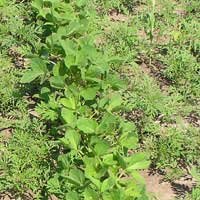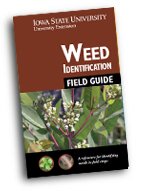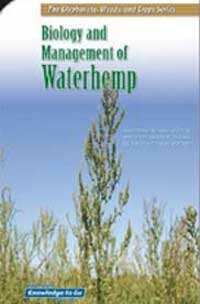
-
Diseases
- Asian Rust
- Anthracnose
- Bacterial Blight
- Bacterial Pustule
- Bean Pod Mottle Virus
- Brown Stem Rot
- Cercospora Leaf Blight
- Charcoal Rot
- Downy Mildew
- Frogeye Leaf Spot
- Green Stem Syndrome
- Iron Deficiency Chlorosis
- Phytophthora Root & Stem Rot
- Powdery Mildew
- Rhizoctonia
- Seedling Diseases
- Septoria (Brown Spot)
- SCN (Soybean Cyst Nematode)
- Soybean Mosaic Virus
- Stem Canker
- Sudden Death Syndrome
- Viruses
- White Mold
- Pests
- Biological Control
- Agronomics
- Diagnostic Tools
- About Us
- Library
Weeds
 |
| Weeds compete with early season soybeans. Common weeds include ragweeds, Eastern black nightshade, waterhemp, woolly cupgrass, yellow foxtail, large crabgrass, and others. |
Weeds can be one of the biggest challenges a soybean grower will face. Weeds compete with soybeans for light, moisture, and nutrients, with the early-season competition being most critical. Most of the yield reduction occurs during the first six weeks after planting.
Know your weeds
Annual weeds are those weeds that live for a single growing season and die at the end of the year after producing seed. Examples of annual weeds are crabgrass, lambsquarters, and pigweed. Some biennial species produce seeds in their second year and then die.
Perennial weeds live for several years and regenerate shoots each year from underground roots and rhizomes. Quackgrass, horsetail, plantain, thistle, and ragweed are examples of perennial weeds. Weeds are also classified as either broadleaf weeds or grasses.
 |
|
There are many excellent resources to help you identify weed seedlings and older weeds your fields. View resources» |
Choose control methods that are most effective for your specific weed problem. Get to know the weed species that occur in your fields and keep track of them with field maps.
Protect the value of herbicides by managing resistance
The introduction of Roundup Ready® soybean in 1996 dramatically changed weed management in soybeans. Roundup Ready varieties are genetically altered to tolerate applications of Roundup and other herbicides containing the active ingredient glyphosate.
Many growers came to rely almost exclusively on this method of weed control. Glyphosate provides broad-spectrum weed control, and it is better than many other herbicides at controlling larger weeds. It is also considered to have low environmental and human health risks.
 |
|
Purdue University has published a series of excellent weed-specific management publications, written by university weed scientists in response to increasing herbicide resistance. View publication list» |
The need to diversify weed management programs to protect the value of glyphosate, and other herbicide active ingredients, can not be over-emphasized. Glyphosate-resistant weeds are becoming more and more common. To date, over nine species of weeds are known to be resistant to glyphosate in the United States.
Weeds with resistance to multiple active ingredients also occurs. Lambsquarters with resistance to triazines, ALS inhibitors, and insensitivity to glyphosate makes this weed a serious threat to soybean production. Waterhemp is another common weed in the Midwest which has known biotypes resistant to ALS-inhibitors, PPO, triazine, and glyphosate.

